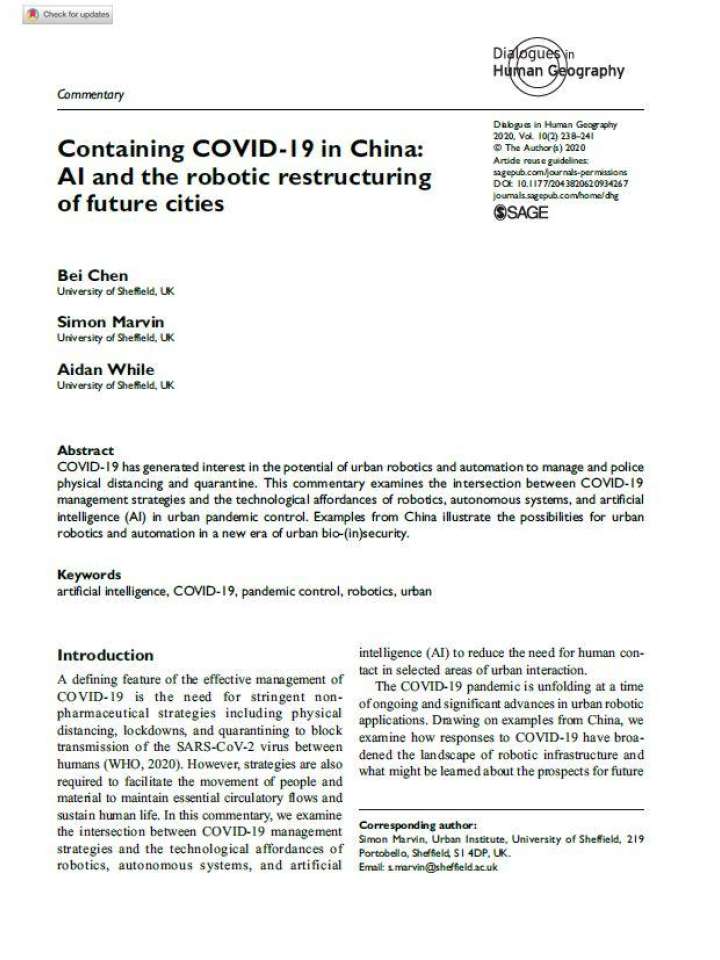Containing COVID-19 in China: AI and the robotic restructuring of future cities
The field of urban studies has made important contributions to the study of SARS and other infectious diseases by exploring the conceptual linkages between global cities and epidemiology. This commentary adds another dimension to that work by highlighting linkages between urban pandemic management and the emerging field of urban robotics. Urban robotics has had particular appeal during the COVID-19 pandemic because it assists with service delivery, policing, and healthcare while minimizing human-to-human contact. So far these technologies have been framed as largely socially beneficial, with profiling and intervention based primarily on a logic of pandemic control.
The authors also argue that much of the robotic response to COVID-19 has been confined to initiatives that are well-promoted but relatively limited in functional capacity. However, what the Chinese experience points to is the potential for an extended reach of artificial intelligence (AI) and automation into everyday lives facilitated by autonomous systems, not least in relation to overlapping forms of biosecurity control and spatial management. The researches point out that there are undoubtedly economic, social, and health benefits of urban robotics, but these beneficial uses should not override the need for meaningful public scrutiny of their application in different urban contexts. They stipulate that critical urban research can help ensure that the accelerated technological response to pandemic control does not reinforce or extend the proprietorial logic of the smart city.
Explore further
